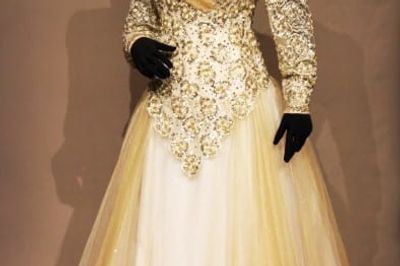Frist Center opens new exhibition featuring Tennessee artists with disabilities
The Frist Center for the Visual Arts will open The Artist’s Voice: An Exhibition Featuring Tennessee Artists with Disabilities on Friday, May 16, in the Conte Community Arts Gallery. The juried exhibition presents more than 50 paintings, prints, sculptures, digital art and documentary film created by 54 Tennessee artists, who each live with a disability. The artists and their works were selected by a juried panel from more than 400 submissions. Admission is free for this exhibition, which will continue through Sept. 14.
“The works in The Artist’s Voice are a testament to the power of art to eliminate barriers as it offers healing, strength, and encouragement to its creators, while giving voice to the varied lives of these resilient artists,” says Anne Henderson, director of education at the Frist Center. “The artwork provides a visual language that broadens our own understanding as well, not only of people with disabilities, but also of our connections with each other and the world.”
The works featured in the exhibition have an expressive force and sense of beauty that transcend any limitations that might be imposed by their makers’ disabilities. The artists' personal circumstances often inform their art, as well as their chosen media. Some of the works explore an artist’s daily struggles of living with a disability; others convey a positive outlook, rich with vitality and raw energy that is often achieved through the use of bright, bold color. Intertwining themes of strength, resilience, fragility, contentment and endurance can be seen throughout this exhibition. Though each work stands on its own artistic merit, the individual stories of their creators make the art even more engaging and awe inspiring.
The artists in this exhibition are motivated to make art for many reasons. Some use the creative process as a means of coming to terms with their particular situations and the world, while others use art as an escape from it. All of the artists attest to the therapeutic value of art and maintain that creating it assists them in their personal efforts to heal, live, and flourish in the world at large.
An example of this transformative power of creativity is seen in the work by residents of the Clover Bottom Developmental Center. Many of the non-verbal residents, as well as those facing other communication challenges, respond to color, shape and texture. Their intricate sculptures, which are made of wood with polymer clay or brightly colored felt, are testimony to the idea that art offers vision and voice to the silent and misunderstood.
For Lyrica Marquez, an artist with autism who usually relies on her mother’s support and assisted typing to communicate, the act of painting benefits her in the same way sculpture benefits the Clover Bottom residents.
“In art, I am free to lose my disability over [to] the ways that the colors and lines flow from a soul’s expression,” writes Marquez in her artist’s statement. “It frees the ‘me’ who has no spoken words, only color and form as my own independent language. My art gives me a home in an otherwise hard-to-fit-in world.”
